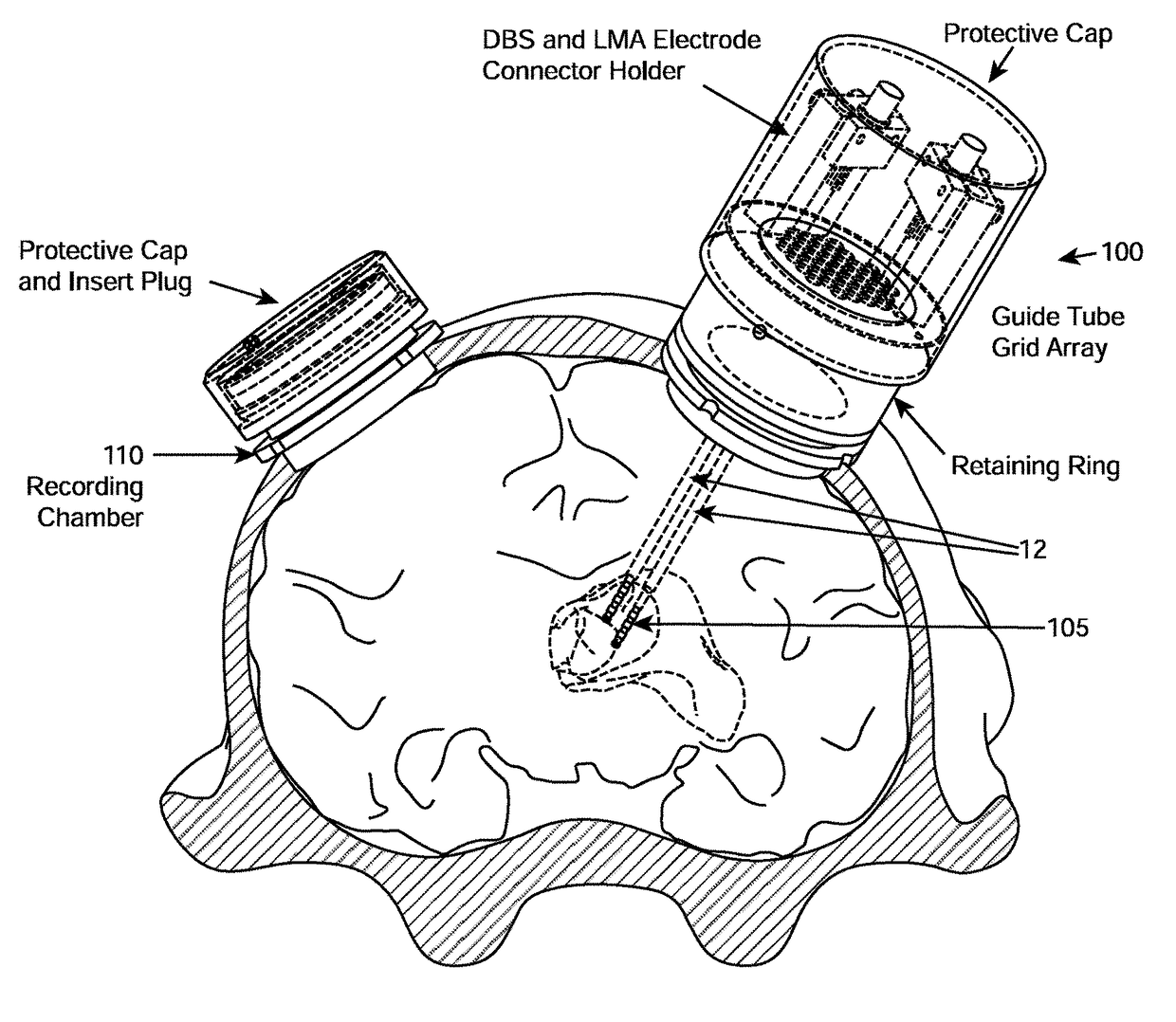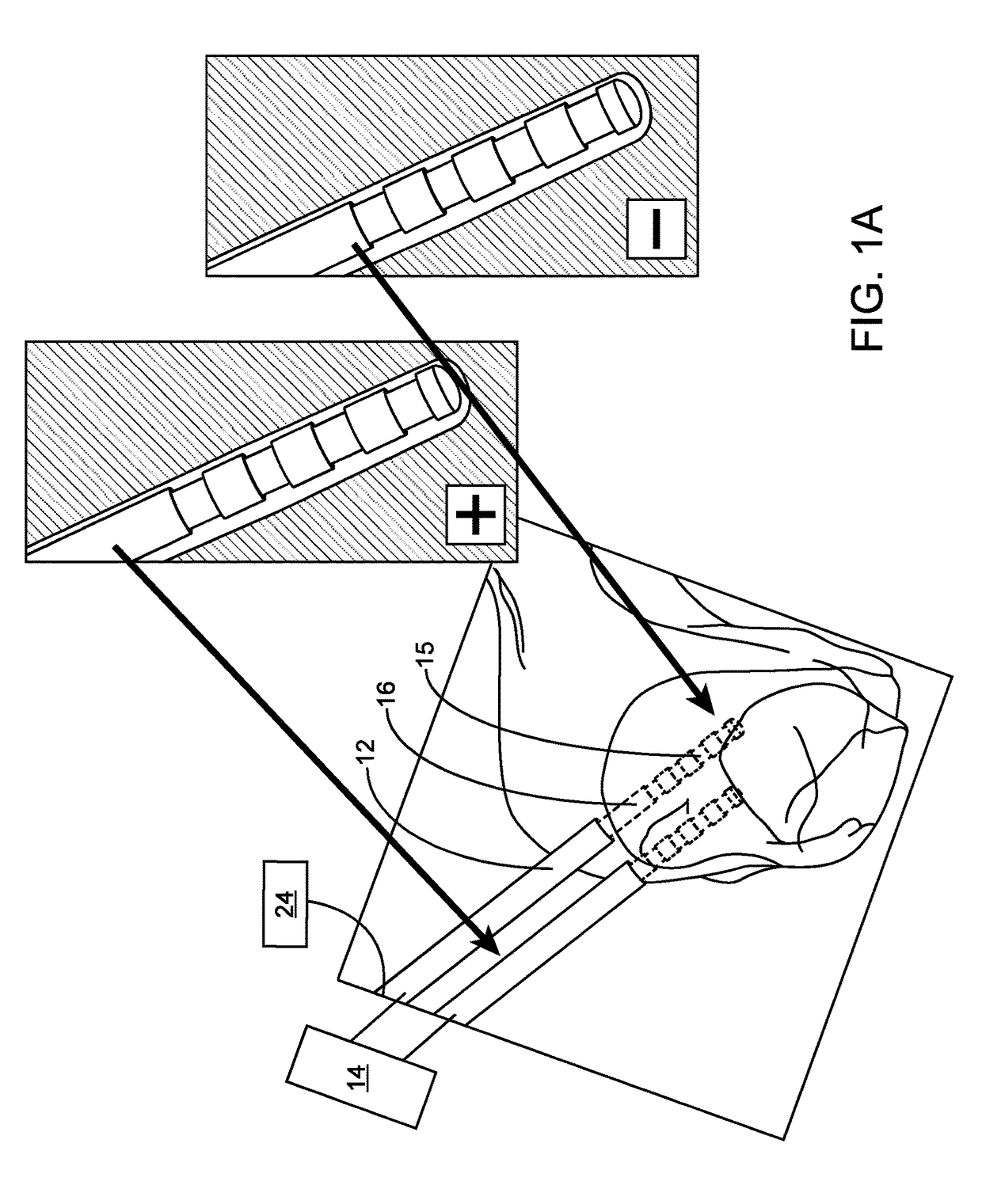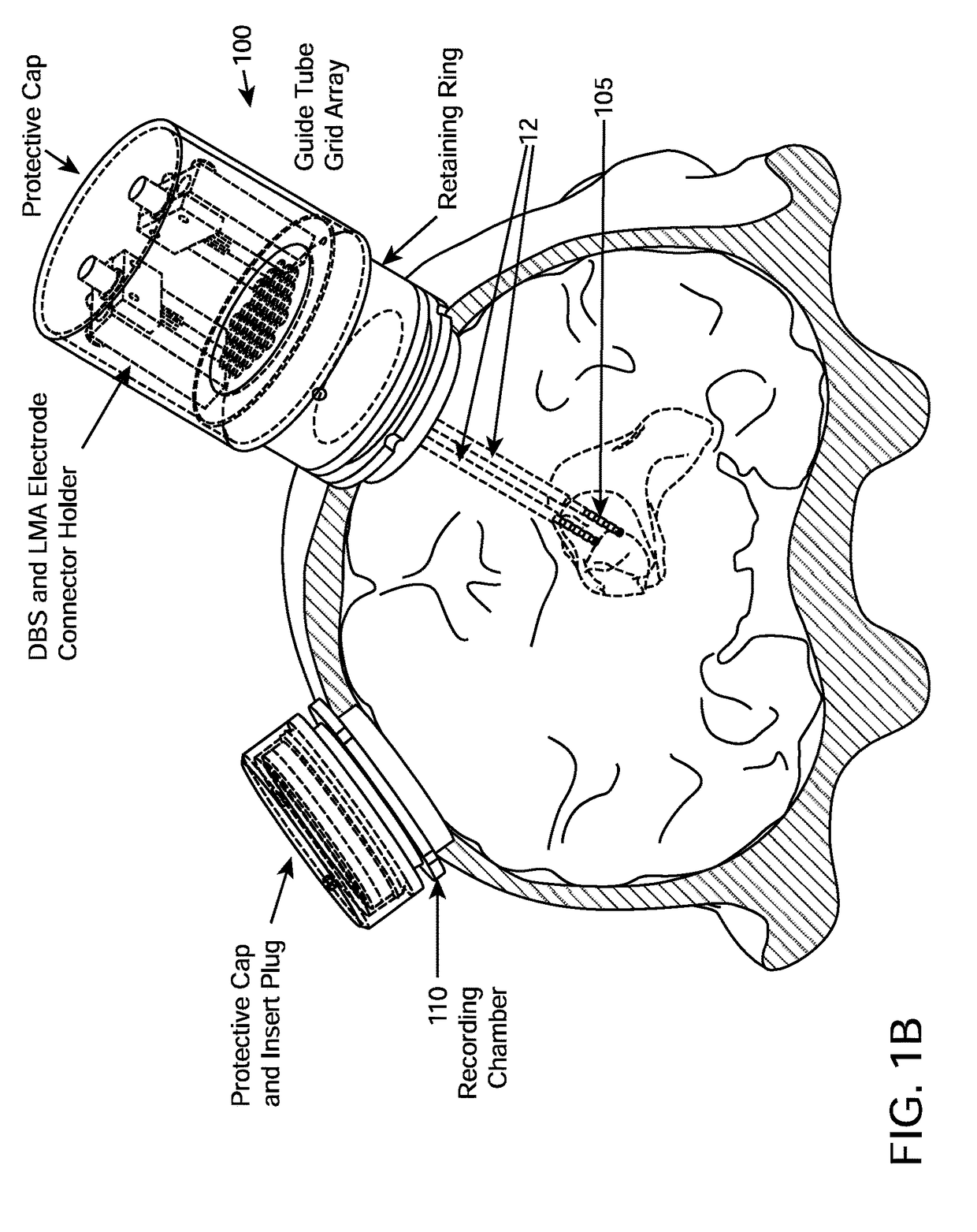System and methods for multi-site activation of the thalamus
a multi-site activation and thalamus technology, applied in the field of system and methods for multi-site activation of the thalamus, can solve the problems of insufficient recruitment of resources, inability to reestablish vocational re-entry or other functional levels, chronic cognitive impairment,
- Summary
- Abstract
- Description
- Claims
- Application Information
AI Technical Summary
Benefits of technology
Problems solved by technology
Method used
Image
Examples
example 1
Behavioral Experiments
[0184]A primate model was developed for evaluating strategies to modulate cognitive performance through deep brain stimulation. Towards this goal, a macaque monkey was implanted with a fixed set of 10 EEG electrodes, a recording chamber with a 32-microelectrode microdrive (Gray Matter Research), and an in-house designed Deep Brain Stimulation and Recording System (DRBS) as shown in FIG. 1B. The recording chamber was placed over the frontal lobe of the monkey to allow for simultaneous multichannel single-unit and local field potential (LFP) recording from the frontal eye fields (FEF), the dorsal lateral prefrontal cortex (DLPF) and the dorsal striatum. The DBRS was implanted over the parietal lobe to allow for deep brain stimulation and local field potential recording in the central thalamus. Two DBS electrode-based stimulators were placed in the central thalamus approximately 3 mm apart, one in the anterior intralaminar nuclei (hereinafter referenced as the ros...
example 2
Impact of DBS on Neural Activity
[0195]Since central thalamic DBS is seen to have a reliable influence on the monkey's performance on sustained attention tasks, single-unit and local field potential recordings (LFPs) were analyzed to determine if DBS also produced a reliable change in neural activity during the delay periods of the tasks. Unit and local field potential activity from 140 recording sites within frontal areas 8 and 45, prefrontal areas 9 and 46 and within anterior dorsal portions of the caudate and putamen. The majority of unit recordings exhibited clear task-dependent modulation either during or flanking the delay period of the sustained attention task (task described in FIG. 11). The LFPs within these regions displayed significant peaks in power spectra calculated from the first second of the delay periods. These peaks appeared within the delta (0.5-4 Hz) and beta (15-30 Hz) bands of the power spectra. FIGS. 14-16 present the LFP activity recorded from three locations...
example 3
Additional Monkey Data
[0203]Model reconstruction of the DBS electrode positions are shown in FIGS. 20A and 20B. FIG. 20A shows the electrodes within the right central thalamus of the first animal. FIG. 20B shows the electrodes bilaterally in the second animal. The central thalamic nuclei and reticular nuclei are shown in relation to the DBS electrodes. Multiple 6-contact DBS electrodes coated with BT DOT (Biotectix, LLC, Ann Arbor, Mich.) were implanted within the central thalami of two animals. Each animal was implanted with multiple Gray Matter Research, LLC recording chambers and devices and a custom EEG array in order to investigate interactions among large cellular populations within the central thalamus, dorsal striatum, prefrontal cortex, and broadly across the cerebral hemispheres using EEG. A current-controlled charge-balanced asymmetrical biphasic waveform, varying in amplitude and frequency was delivered continuously during blocks of trials while the animals performed a s...
PUM
 Login to View More
Login to View More Abstract
Description
Claims
Application Information
 Login to View More
Login to View More - R&D
- Intellectual Property
- Life Sciences
- Materials
- Tech Scout
- Unparalleled Data Quality
- Higher Quality Content
- 60% Fewer Hallucinations
Browse by: Latest US Patents, China's latest patents, Technical Efficacy Thesaurus, Application Domain, Technology Topic, Popular Technical Reports.
© 2025 PatSnap. All rights reserved.Legal|Privacy policy|Modern Slavery Act Transparency Statement|Sitemap|About US| Contact US: help@patsnap.com



